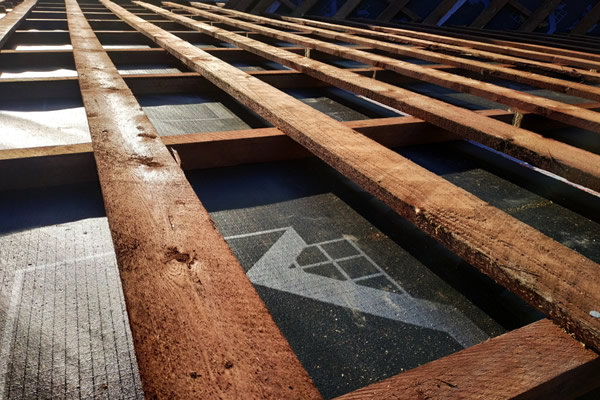What Is Synthetic Underlayment?
Synthetic underlayment is popular among roofing contractors for its ease of installation, durability and rooftop traction. If your business hasn't used this material before, you should know it's a viable replacement for traditional organic or asphalt felt.

But what is synthetic underlayment? Just like felt underlayment, this important component of any roofing installation is sandwiched between the decking and outer material, where it insulates against heat and cold, prevents damage to the roof's deck and acts as a water barrier.
The Advantages of TRI-BUILT Synthetic Underlayment
As the San Francisco Chronicle explains, long-lasting polymers give synthetic underlayment its strength and longevity. When it's installed correctly, this kind of underlayment offers a higher degree of moisture and weather protection than felt.
Unlike traditional asphalt-saturated felts, TRI-BUILT synthetic underlayment can be used in extremely low temperatures without becoming stiff or difficult to unroll. In hot temperatures, it's resistant to drying out, cracking or leaching oils. In addition, it resists mold growth, doesn't wrinkle and lies flat, making installation easier. Its nonwoven walking surface poses a lower risk of slipping for the roofers who install it.
Using synthetic underlayment can also save contractors valuable time on the roof. TRI-BUILT's 42-inch-wide by 286-foot-long lightweight rolls (six squares more per roll than felt) mean fewer cuts and rolls to handle per job. Premarked nail guides and a chalk-table surface mean you don't have to completely overhaul your workflow or teach your crew how to lay a new material.
Underlayment and Severe Weather
Any underlayment might be left exposed for long periods of time when roofing contractors wait for the delivery of roofing materials or a change in the weather. While exposed synthetic underlayment can withstand environmental conditions over time, felt is more prone to water and wind damage.
Fine Homebuilding reports that synthetic underlayment's resistance to tears and water is what makes it a valuable choice for slow-to-install steep slope options like cedar shakes. A roof covered with TRI-BUILT synthetic underlayment will stay watertight for months, even without the final roofing material installed.
So what is synthetic underlayment? It just might be your next purchase for a durable and high-performing residential underlayment.